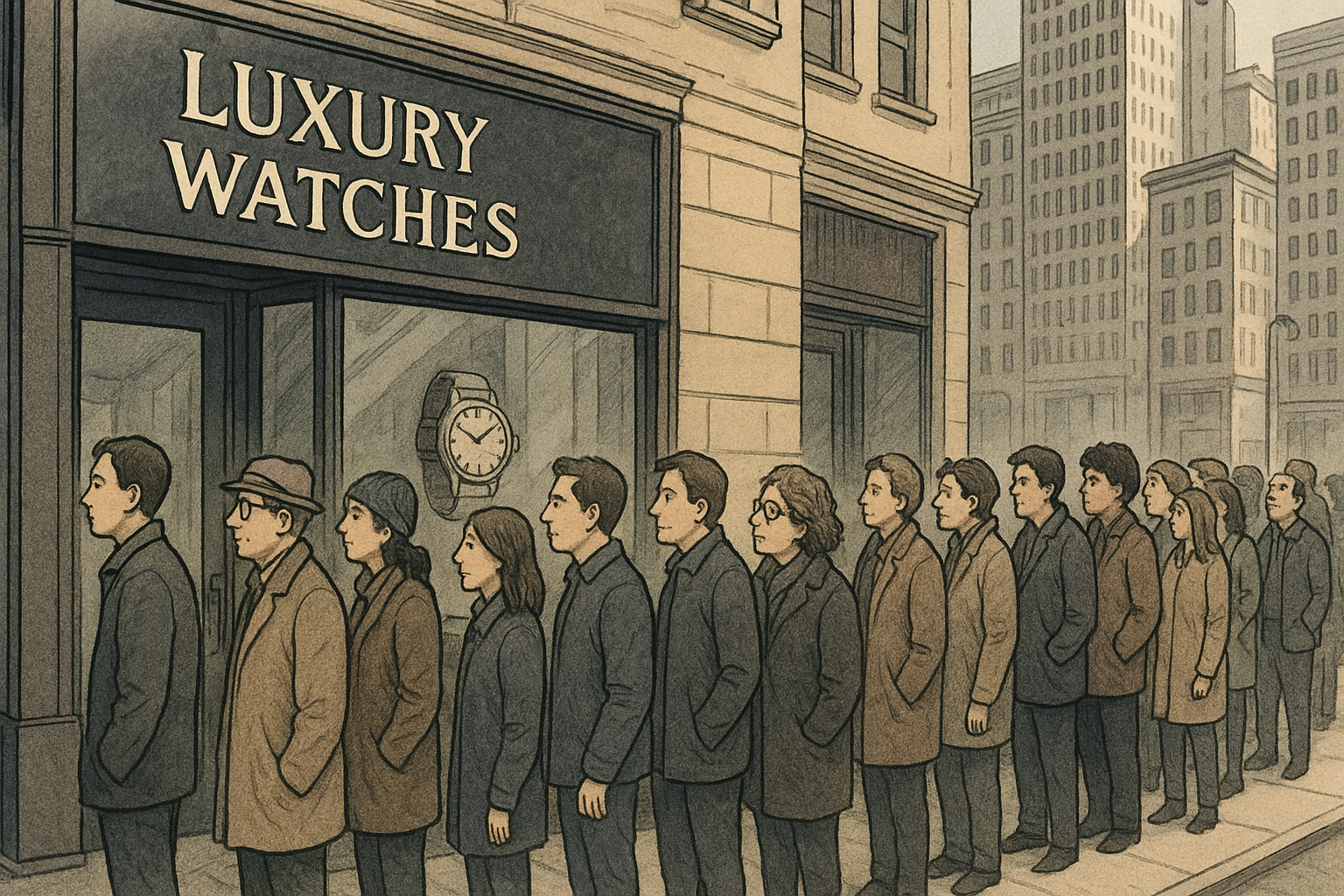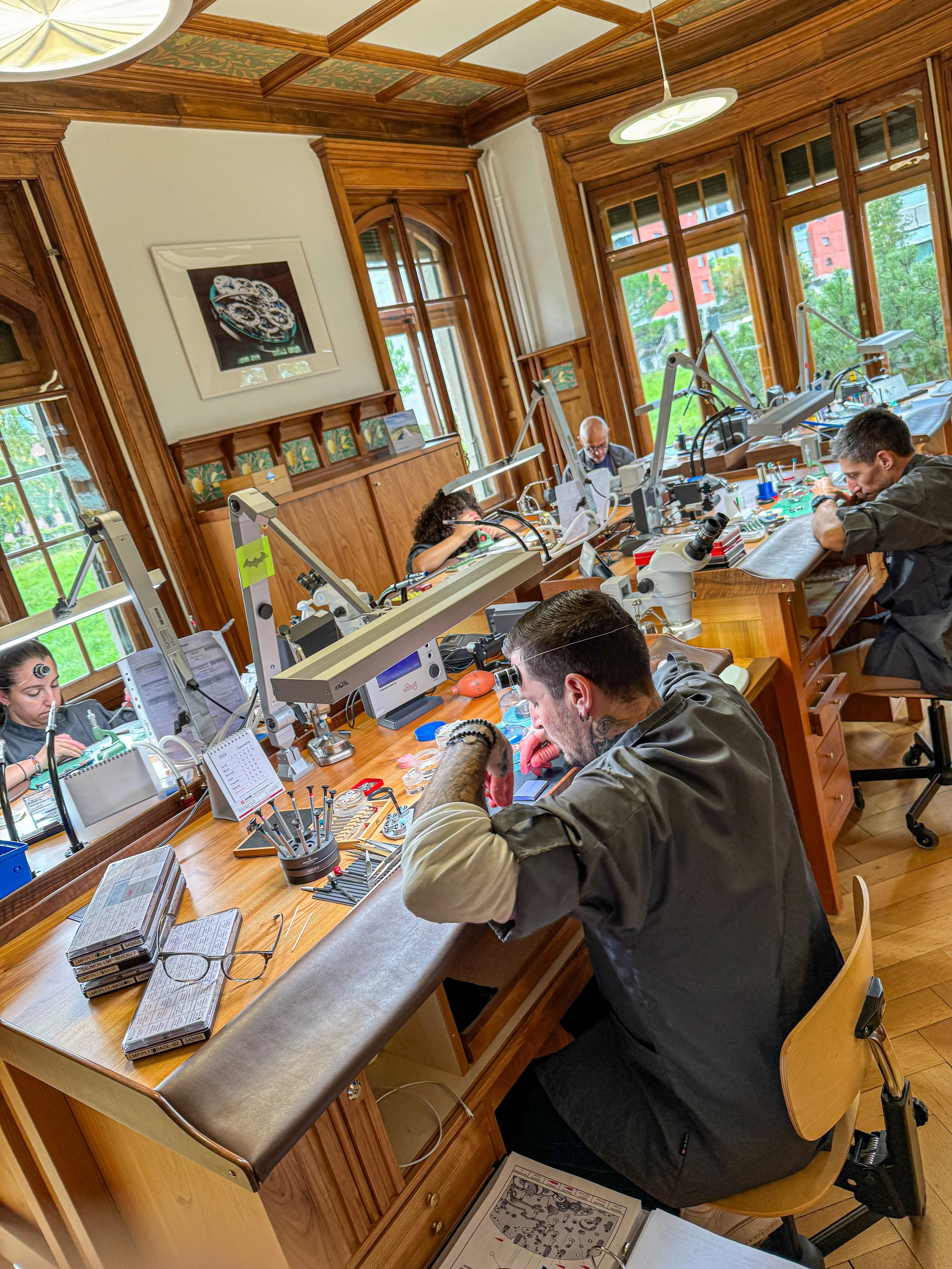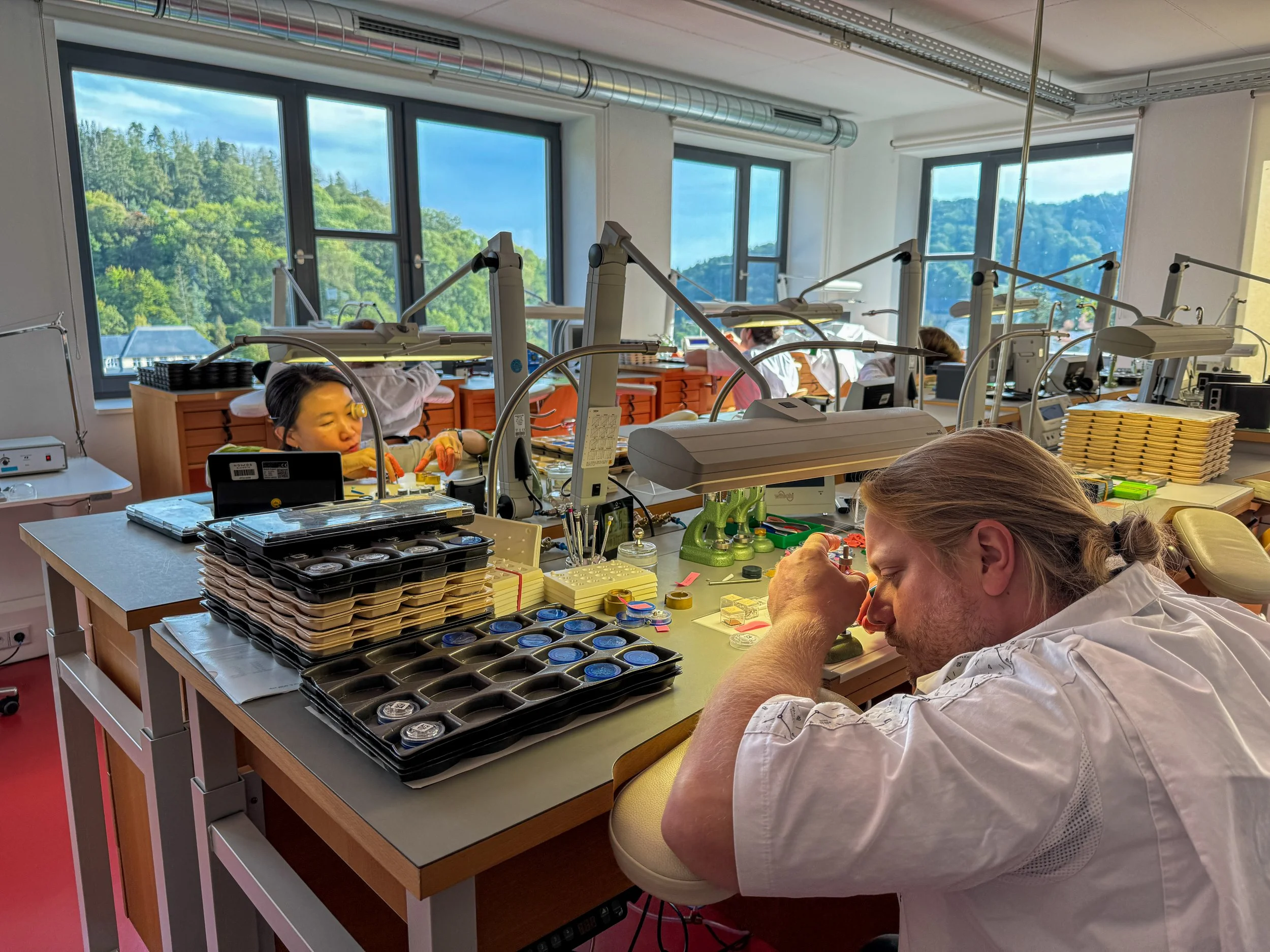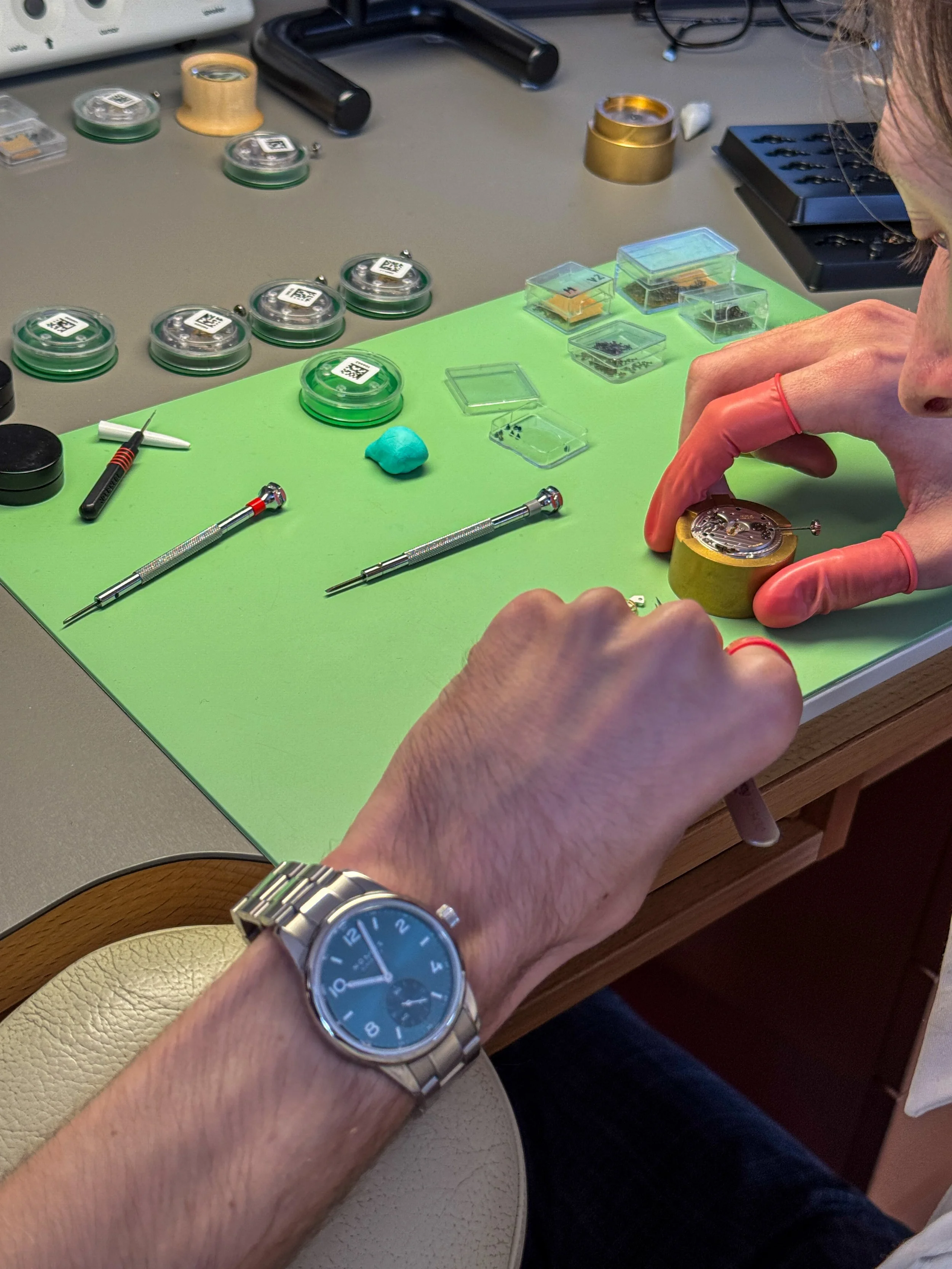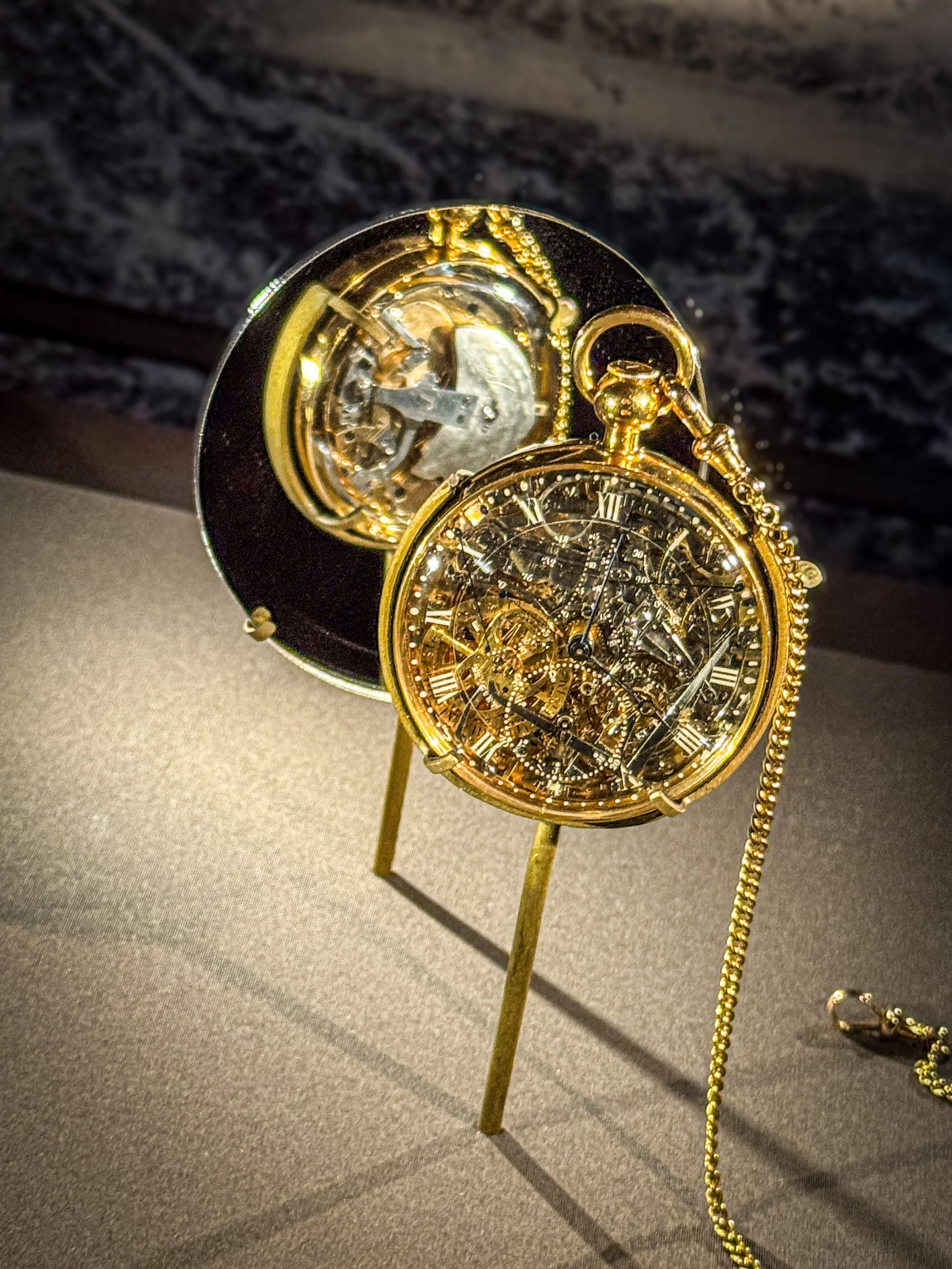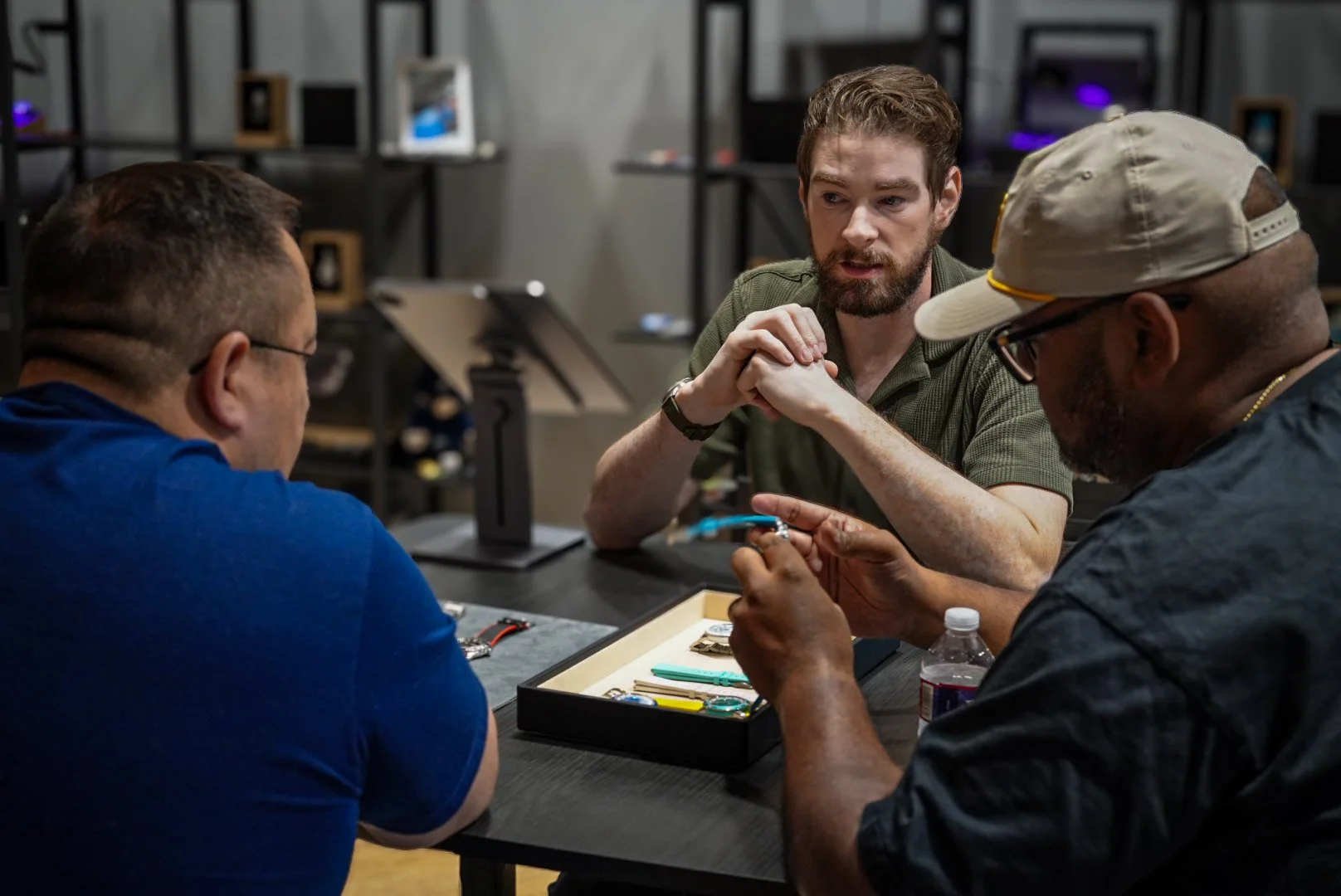The Hollow Hour: How Luxury Forgot What It Was
There was a time when “luxury” meant something. When it wasn’t just a word slapped on press releases or a hashtag next to a wrist shot. Once upon a time, luxury was about craft, about rarity, about something so meticulously made that you could almost feel the hours of human attention baked into it. Now? “Luxury” has been boiled down to a price tag, a logo, and a waitlist. The romance got optimized out.
Photo by Chris Antzoulis - MB&F headquarters in Geneva
We’ve hit a strange point in watch culture where everyone’s chasing “luxury,” but no one seems to know what it actually is anymore. You’ve got brands using the word to justify cutting corners, collectors flexing for clout instead of passion, and media outlets calling anything north of $2,000 “high-end.” Somewhere between the sponsored content and the hype drops, luxury stopped being about the object and started being about proximity to the idea of it.
Don’t get me wrong: I love a beautifully made watch. I love a hand-finished bridge, a crisp chamfer, a rotor that looks like it was machined by a monk with OCD. However, I also love honesty, and too much of the watch world has lost sight of it. The word has been so diluted that it’s basically club soda at this point. The fizz is still there, but the flavor’s gone.
I want to preface this by saying that what follows is not intended to place blame on specific individuals, media outlets, or brands. We’re all complicit in varying degrees. I’m speaking on the topic of “lost luxury” to start a conversation, raise awareness about how things are functioning, and perhaps we can all approach things a bit differently, or find solutions to help remedy the situation as I see it (and maybe you do as well).
***All photos were taken by me, each one capturing the human hands and hard work behind the watch industry — what I believe is the true definition of “luxury.”***
The Illusion Industry
Somewhere along the way, luxury became a game of smoke and mirrors. The big groups figured out they didn’t need to make better watches; they just needed to make people believe they were better. Scarcity became the new craft. A long waitlist? Prestige. A limited edition with a different dial color? Collectible. A brand ambassador who’s never wound a watch in their life? Aspirational. And we fell for it; all of us, at some point. Because the marketing machine doesn’t just sell you a watch; it sells you a feeling. That you’ve arrived. That you’re part of something rare and elevated. It whispers, “You’ve earned this,” while quietly raising the price next year and cutting production costs.
It’s not just the brands, though. The ecosystem around them, influencers, flippers, and even some media, helped inflate the bubble. We created a culture that rewards the illusion of luxury more than the substance of it. We stopped asking, “Is this well made?” and started asking, “Can I get one?” Luxury used to be about the pursuit of excellence; now it’s about the performance of exclusivity. You don’t need to make something incredible; you need to make it unavailable.
Photo by Chris Antzoulis - Nomos facilties in Glashütte
The New Luxury Machine: Influencers and Watch Media
Of course, the machine doesn’t run on hype alone; it needs operators. Enter the influencer and the new wave of “watch media.” The two have blurred together so much that it’s hard to tell where journalism ends and marketing begins. Scroll through Instagram or YouTube, and you’ll see the same handful of talking points repackaged in different voices. Everyone’s “just sharing their passion,” but somehow every post ends with an affiliate link. It’s the horological equivalent of reality TV: glossy, repetitive, and sponsored to the teeth.
Photo by Chris Antzoulis - Nomos facilties in Glashütte
These creators (I’m not excluding myself in this either) talk about “honesty” while unboxing yet another free piece “for review.” It’s not malicious, it’s just the new normal. But when everyone’s livelihood depends on staying in the brands’ good graces, how honest can anyone really be?
The tragedy is that storytelling, real storytelling, used to be the heartbeat of this space. Writers and photographers once treated watches as cultural artifacts, as vessels of design, history, and human effort. Now, too often, coverage has been reduced to press-release karaoke. Specs, price, availability. Post it fast, post it pretty, collect the clicks. And in that rush to please the algorithm, nuance gets lost. We’ve traded curiosity for consistency, replaced critique with cheerleading, and turned journalism into customer service. The result? A feedback loop where brands feel no pressure to innovate, because the audience, fed on a steady diet of hype and hashtags, will applaud either way.
Luxury used to feel like discovery. Now it feels like content.
The Complicity of Collectors and Enthusiasts
But let’s not pretend collectors and enthusiasts are innocent bystanders in all this. Collectors, myself included, helped build the echo chamber. We fed the beast every time we double-tapped a “flex” post, every time we lined up for a boutique release, every time we called a watch “overhyped” but still checked the price on Chrono24. We’re participants, not victims. We say we want authenticity, but our behavior tells another story. We crave validation disguised as community. We share wrist shots not to celebrate a watch, but to see who notices. Somewhere along the way, collecting became less about personal connection and more about public confirmation, about being seen as someone who “gets it.”
Photo by Chris Antzoulis - Breguet No. 160 “Marie-Antoinette”
And brands, savvy as ever, noticed. They started speaking our language back to us. They borrowed the aesthetics of passion; the collector meetups, the storytelling, the “behind-the-scenes” factory visits, and repackaged them as marketing collateral. Even the most “independent-feeling” brand now has a strategy built around seeming relatable.
We’ve been so busy congratulating each other for being insiders that we didn’t notice how the line between insider and customer quietly evaporated.
Worse, we’ve turned scarcity into a sport. We fetishize waitlists. We brag about not being able to get something, as if the act of wanting itself were a credential. That’s not collecting, that’s consumer masochism. We’ve convinced ourselves that suffering for a product makes it more meaningful, when all it really does is make us more pliable.
It’s a feedback loop of insecurity and desire, one that keeps both the brands and the influencers rich, while the soul of “luxury” quietly erodes beneath all the hashtags.
Reclaiming Luxury
So where does that leave us? If “luxury” has been hollowed out by hype, bought out by marketing, and chewed up by algorithms, what’s left worth believing in?
Plenty, actually. You just have to look in the right places.
True luxury still exists, it’s just quieter now. It lives in the hands of the independent makers who still care more about tolerances than trends. It’s the watchmaker who machines his own screws because no supplier can meet his standards. It’s the designer who obsesses over the perfect bracelet curvature and sends back a prototype multiple times because she wants the watch to sit right on your wrist as well as be cohesive in overall aesthetic. It’s the brand that builds because they need to create, not because a marketing department needs a “drop.”
Real luxury doesn’t scream. It hums. It’s in the imperfection of hand-applied lume, the gravity of a well-aged case, the way a movement responds when it first comes alive in a watchmaker’s hands. It’s not about status; it’s about substance. And it’s certainly not about what it costs, it’s about what it means to you.
Maybe that’s the point we’ve missed all along: luxury isn’t something you buy; it’s something you feel. It’s the moment you glance at your wrist and remember where you were when you got that watch, not what it’s worth, but why it was right for you in the first place.
Luxury, in its truest form, is time made tangible. It’s care, craft, and connection, distilled into steel and sapphire. And no influencer, no marketing team, no hype cycle can fake that.
Photo by Chris Antzoulis - Christopher Ward Showroom Dallas
The Quiet Rebellion
Maybe that’s the real rebellion now, to buy less, to care more, to remember that “luxury” was never supposed to be loud. It was supposed to be personal. Not about being seen, but about seeing the detail, the craft, the time someone poured into something beautiful.
Because in the end, the most luxurious thing any of us can own isn’t a watch at all. It’s the moment we stop chasing and start appreciating. That’s when time will finally feel like ours again.
REMEMBER, nerds…. to keep the comments clean. Please don’t make me pull out ole Abraham-Louis here.
